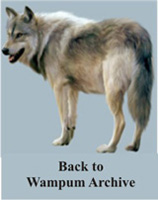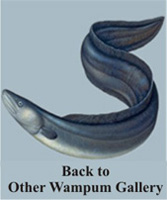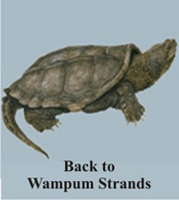Photographs (left to right): All Mohave Desert, California/Nevada
Wampum Belt Archive
Wabanaki Maliseet Belt
R. D. Hamell Devemer 17 2024
Original Size: |
Length: |
Reproduction: |
Beaded Length: 16.0 inches long. Width: 3.0 inches. Length w/fringe: 36 inches. |
Beads: |
Columns: 96. Rows: 6. Beads: 576. |
Materials: |
Warp: Deer leather. Weft: Artificial sinew. Beads: Polyer. |
Description:
Belt belonged to Mrs Perley, Maliseet, Tobique Reserve, NB.
The Maliseet, also known as the Wolastoqiyik or Malecite, are an Indigenous people who traditionally lived in the Saint John River valley and its tributaries. Their territory extended across parts of Maine and New Brunswick in Canada, and once stretched as far as the St. Lawrence River.
The Maliseet, also called the Wolastoqiyik, Wəlastəkwewiyik and Malecite are Algonquian-speaking First Nation of the Wabanki Confederacy which formed around1680 (or earlier). This alliance was in reponse to the aggression by the Haudenosaunee Confederacy (the Mohawks in particular).
The Wabanaki Confederacy consists of five nations (NBCC 2024):
Nation Name |
Meaning |
English Name |
Mi’kmaq (L’nuk) |
Family/Friends/My Brothers (the People) |
|
Wolastoqey |
People of the Beautiful, Bountiful River |
Maliseet (means slow talkers in Mi’kmaq) |
Peskotomuhkatiyik |
People of the Pollock |
Passamaquoddy |
Penobscot |
Place where the rocks open out (of the Penobscot River) |
|
Abenaki |
Dawn Land |
Reference:
New Brunswick Community College (NBCC). 2024. Wxploring the Wabanaki (People of the Dawn land) Condederacy. https://nbcc.ca/indigenous/did-you-know/wabanaki-confederacy
Wiseman. F. 2013. Personal Communications.
 |
 |
 |
 |
 |
 |
 |
 |
|---|

